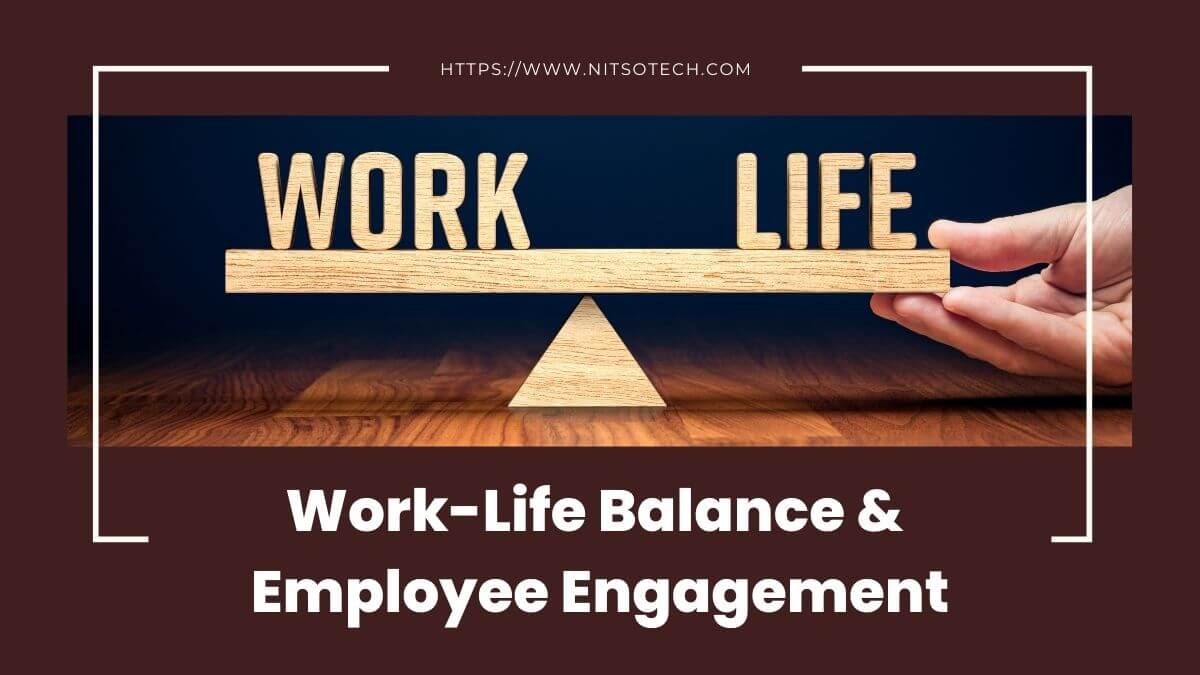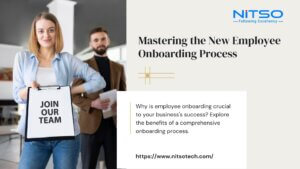Nowadays, effectively balancing work and personal life while fostering strong employee engagement has become a big challenge for organizations. The search for achieving maximum productivity frequently results in extended working hours, increased stress levels, and limited personal time. All these can cause employee burnout and significantly affect employee well-being as well as job satisfaction.
Organizations have now realized the importance of maintaining work-life balance and employee engagement to make the workforce more productive. But, most of them are not following the right strategies to achieve the desirable results. Addressing the issue, this article includes some effective ways that can enable you to find the balance between professional and personal life while fostering employee engagement. These actionable steps can also help in building a positive work environment and reduce the turnover rate of the organization. But before that, let us go through the work-life balance and employee engagement in detail.
Table of Contents
What is Work-Life Balance?
The state of maintaining the balance between an employee’s commitments to the job and personal life is referred to as work-life balance. It involves investing time and effort into different phases of life such as job, family, well-being and personal matters. A healthy work-life balance enables individuals to fulfill their professional endeavours while enjoying personal relationships and getting engaged in various activities that promote their well-being.
What is Employee Engagement?
Employee engagement describes how much an individual displays motivation, dedication, and enthusiasm towards both their job tasks and employer brand/reputation generation within an industry sector. Any organization would want highly-engaged workers because it increases effort directed at maximizing organizational objectives. As a result, engaged workers demonstrate increased productivity levels, and this subsequently lowers staff turnover rates since they feel a deeper sense of connection both to the internal workings of an organization and those external factors such as work performance incentives or promotion prospects. Engaged workers are usually highly accountable, possess ownership mindsets, and strive consistently to outdo themselves beyond traditional core job functions; they genuinely embody all that a forward-thinking business requires for continued success in the modern marketplace.
Focusing on employee engagement and work-life balance is crucial for any organization as they have a significant impact on overall productivity, growth and success of the entity.
Article you might be intrested in: Why Does Your Business Need Employee Management System?
Practices to Maintain Work-Life Balance and Employee Engagement
As we know, employees are the key asset for any organization and it is crucial to retain them. However, when organizations fail to maintain a work-life balance and do not focus on employee engagement, the turnover rate will increase. Here are some effective practices that can help you solve the issue.
1. Facilitate Opportunities to Create Connections
You can establish life-focused communities, allowing employees with shared hobbies and interests such as running, swimming, painting, baking, parenting and other activities to come together. It will provide opportunities for employees to learn from their colleagues, gain motivation and provide support to one another.
A sense of feeling valued, and making contributions are considered effective factors for enhancing employee engagement within the organization. Additionally, by hosting non-work communities, the skills learned from engaging with other team members can be used in work-related practices and projects.
2. Give Recognition to Your Employees
Employees strongly desire to fit well into the organization’s purpose and goals. When they perform exceptionally, you can share an appreciation letter with them. It will provide motivation to boost their performance and make them feel engaged in the work. As recognition can make employees feel valued, you can announce their achievements at the workplace.
Another option is to share monetary rewards with your workforce, as it also helps in increasing engagement. You can often provide gifts, incentives, and bonuses to your employees with little celebration. They may have been exhausted from their day-to-day activities. So, rewards and recognition can be really helpful in relieving some stress and continuing their work with inspiration.
3. Provide Remote and Flexible Working
There are many advantages for employees to work in a hybrid working setting, including the freedom to give enough time to their families and work more productively. This setup allows employees to feel empowered, and they can freely manage their time with the least interruptions. With this flexibility, employees can maintain a balance between their work and personal life, resulting in better productivity and job satisfaction.
In a hybrid working environment, any medical emergencies can be addressed without affecting the work. Any working individual will appreciate the assurance of getting medical attention whenever needed and still fulfill the duties of their role.
Hybrid work not only promotes productivity and work-life balance, but it also shows that organization values employee well-being. It fosters a positive work culture while increasing employee retention and the overall performance of the organization.
4. Provide Growth Opportunities
Working in the same role with no growth opportunities can lead to employee dissatisfaction and a decrease in employee engagement. When organizations implement employee development at the workplace, employees will have opportunities for growth, learning, and skill enhancement. It will help employees feel valued and inspired to contribute to the success of the company. Having enough growth opportunities will increase employees’ commitment to the organization and lead to a decrease in the turnover rate.
5. Equip Employees With Automation Tools
To maintain work-life balance and engage employees at the workplace, you can implement the use of automated tools. Automation streamlines time-consuming and repetitive activities while allowing employees to work on more important tasks that require a strategic approach. When manual workloads are reduced on employees’ heads, they can prioritize other tasks more efficiently. It will allow them to distribute the time and effort between their work and personal life. As a result, automation tools help employees to optimize their productivity level and have time for personal affairs.
6. Encourage Employees to Take Breaks and Vacations
Expecting employees to continue working for longer periods or a whole working day can make them exhausted and lead to a reduction in overall productivity. To solve the problem, many organizations offer recreational areas with pools, games, and other activities to help their employees feel relaxed and prevent stress. These places allow employees to take breaks whenever they require to take a break from their work. Taking breaks at regular intervals can enable employees to maintain focus.
When you allow employees to take short breaks during working hours will reduce their daily work-related stress and allow them to recharge. Besides, taking regular breaks can improve an individual’s creativity and productivity as they can start the work with a fresh perspective.
Same as taking short breaks, you can encourage employees to take days off and use the allocated leave balance as it promotes work-life balance. Disconnecting from work and engaging in other activities leads to relaxation for them. Ultimately, by creating a workplace culture that values employee time off, you can demonstrate that a healthy work-life balance is your organization’s top priority.
7. Review Workload Often
You should review the work distribution among employees to make sure that each individual is having a manageable workload. Is it important that you understand the processes involved in assigning tasks to each employee? What may look like an easy and small task to management could actually take a whole day for an individual to finish.
Maintaining open communication is the key to identifying individuals who are experiencing extreme workloads on their heads. It also helps in finding employees who are capable of handling more work.
Additionally, It is recommended that you encourage your teams to provide frequent feedback on their workload. This feedback allows managers to check whether any employees are feeling overworked and take necessary actions to ensure fair work distribution. With this approach, you can promote a healthy work culture where employees are free from extreme workloads, leading to a boost in their job satisfaction.
8. Foster Employee Empowerment and Self-Independence
Employee empowerment is a crucial element in fostering work-life balance and employee engagement. It provides employees with a sense of control and ownership over their activities and makes work-related decisions on their own. Empowering employees come with a boost in job satisfaction while allowing individuals to handle their schedules and workload.
On the other hand, employees will feel valued and trusted when you allow them to become self-independent. It encourages them to be more productive and stay engaged in the work. When employees are working independently, they may find new and effective ways to complete their tasks, and maintain a balance between their personal and professional lives. Fostering an environment that promotes empowerment and self-independence will increase employee engagement levels and help in retaining top talent within the organization.
Article you might be intrested in: The Importance of Employee Development in HRM
Ending Notes
Fostering employee engagement and work-life balance is essential to optimize the overall productivity of the organization. By encouraging time off, allowing flexible working time, reviewing workload, providing growth opportunities, giving recognition, and making self-independent, your organization can empower employees to stay engaged in their work and maintain a healthy work-life balance. Implementing these strategies will create a win-win scenario for your organization, where employees are motivated towards their work and contribute to the long-term growth of the business.








0 Comments